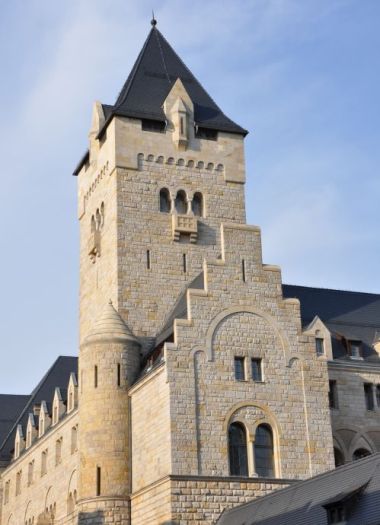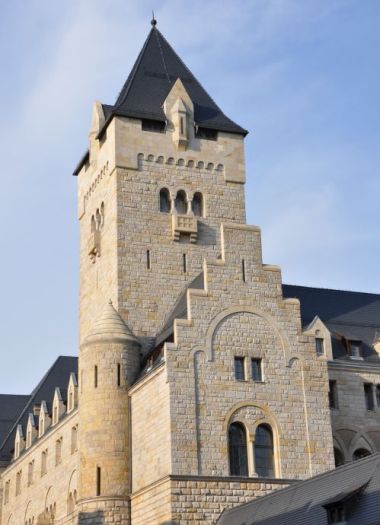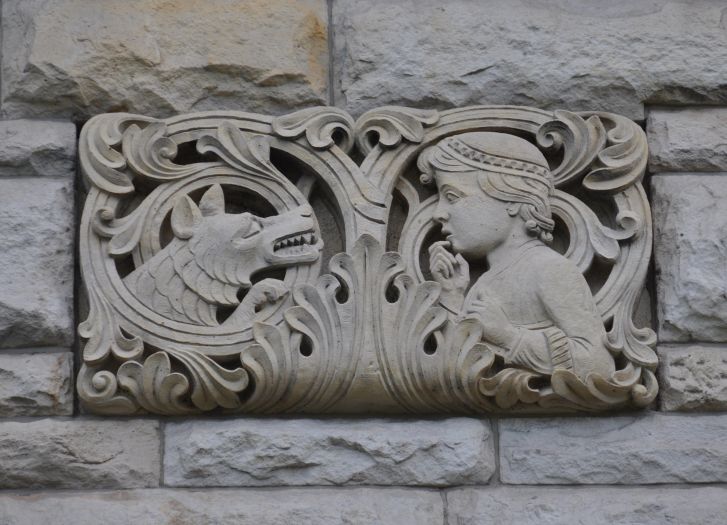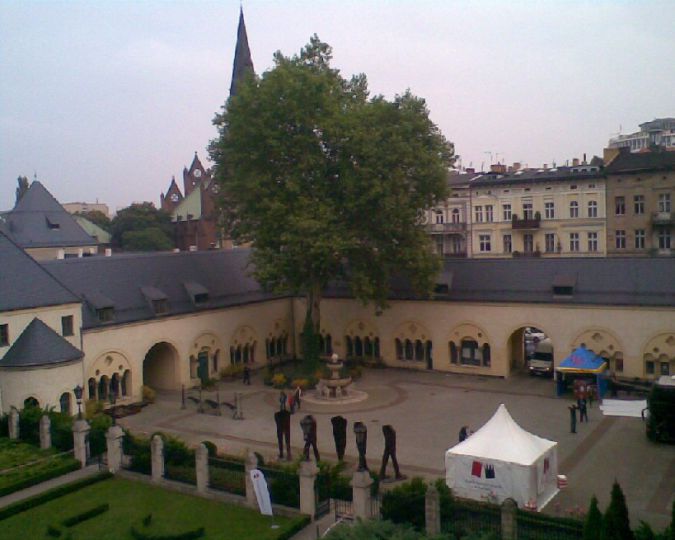
Poznań, the capital town of the region, the Province and the Archdiocese, is situated on the Warta. Poznań is an important stop on the Piast Route.
Following the development plan prepared once for the former fortress area by Joseph Stübben, the construction of Europe’s last emperor’s stronghold started in 1905. The castle was being built in a neo-Romanesque style, after a design by Franz Schwechten. The walls were faced with sandstone plates, applying elements of decorative stonework derived from Romanesque buildings in the south and west of Europe. A careful observer may be astonished by elements taken from the Grimm brothers’ tales. On the Niepodległości Avenue side, you can spot the Wolf and the Little Red Riding Hood; viewing from Kościuszki St., in turn, you will see a balcony supported by the sculpted figures of Hansel and Gretel.
As the construction works were on, a Polish peasant from a village near Poznań would come over to the building site every day to urge the workers. The supervising inspector was so much astonished that he eventually asked the peasant why he was so zealous. The peasant replied that there was a presage whereby once in Poznań an emperor’s castle they erect, then our liberated Poland shall resurrect. Indeed, it did not take long for the prediction to come true: a mere nine years?
Spaces designed for the imperial family, their guests and their servants were precisely singled out in the castle. An entrance to be used only by the emperor and his spouse was incorporated in the tower. It was there that a private chapel was located, modelled after the Capella Palatina of Palermo, and built with William II’s funds. It is not surviving to date as it was destroyed during WW2 by arranging there a private office for Artur Greiser, the Warthenland governor.
The private apartments of the imperial family were situated in the castle’s western section whilst a Throne Room was arranged in the eastern section. In the inner courtyard (accessible form Kościuszki St. or from the park’s side) is a fountain designed after Alhambra’s Fountain of Lions, along with a few figures from a modern ‘group sculpture’ The Unrecognised Ones by Magdalena Abakanowicz (to see the entire composition, you have to go to the Poznań Citadel).
The Emperor actually visited his new residence just twice: first, at the Castle opening ceremony in 1910 and then, three years later.
Once Poland regained independence, apartments of the President of the 2nd Polish Republic were arranged at the castle. The University of Poznań established its seat there as well. It was right there – in the castle’s basement – that three outstanding students of mathematics attended a secret course of cryptology: these were Marian Rejewski, Jerzy Różycki and Henryk Zygalski, who in later years successfully deciphered the secret Enigma code. An obelisk commemorating those famous young cryptologists was erected in 2007 in front of the castle entrance.
Numerous elements of the castle’s original equipment were destroyed during World War 2 and replaced by counterparts made in the so-called Third Reich style. Interestingly, many such elements have survived till this day.
Presently, a cultural centre named ‘Zamek’ (The Castle), the organiser of a number of reputed cultural events, has its seat there. It is there that on 11th November, the keys to the town are handed to the legendary figure of St. Martin; the fun event is accompanied by a kermis where you can buy the famous St. Martin’s croissants [Polish, rogale świętomarcińskie].
Centrum Kultury "Zamek" [‘The Castle’ Culture Centre]
ul. Św. Marcin 80/82
61-809 Poznań
Tel. +48 61 646 52 00
For more, read at:
www.zamek.poznan.pl





